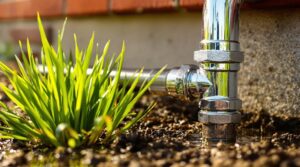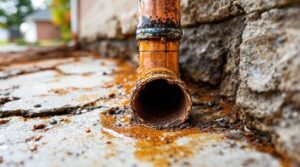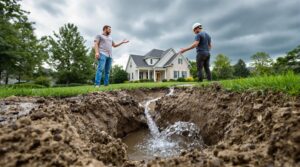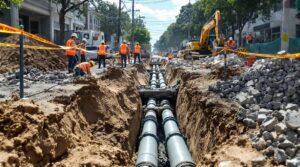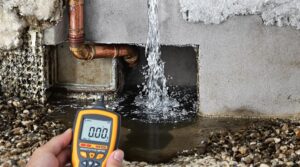A burst pipe under a house can be difficult to detect, but early signs can indicate a problem. Unusual water puddles near the foundation, discolored walls or ceilings, and unexplained increases in water bills are common indicators. Dripping or trickling sounds within walls, gurgling or hissing noises, and clanging or banging pipes can also signal pipe damage. Recognizing these signs can help prevent extensive damage; exploring further can reveal additional warning signs and essential preventive measures.
Key Takeaways
- Unusual water puddles in the yard or near the foundation indicate a possible burst pipe under the house.
- Discolored walls or ceilings with streaks or water marks signal water intrusion from a burst pipe.
- Persistent mold growth in concealed spaces, such as crawl spaces, suggests ongoing moisture issues from a burst pipe.
- Unexplained increases in water bills indicate significant water waste from a hidden leak or burst pipe under the house.
- Strange noises like dripping, gurgling, or hissing sounds within walls may indicate a burst pipe under the house.
Signs of Water Leaks in Hidden Areas
How do homeowners determine if a pipe under their house has burst if they can't see it? Identifying water leaks in hidden areas can be challenging, but certain signs can indicate the presence of a burst pipe. Unusual water puddles in the yard or near the foundation of the house can indicate hidden leaks from burst pipes beneath the ground. Discolored walls or ceilings with streaks or water marks often signal water intrusion from leaks in hidden plumbing areas. Persistent mold growth in concealed spaces, like inside walls or under floors, is a strong indicator of ongoing moisture issues due to hidden leaks. Additionally, unexplained increases in water bills can suggest significant water waste from hidden leaks. To detect hidden leaks, it is crucial to inspect for these signs regularly and investigate any strange occurrences in the plumbing system. Regular monitoring can help prevent extensive damage from water leaks and burst pipes.
Noises That Indicate Pipe Damage
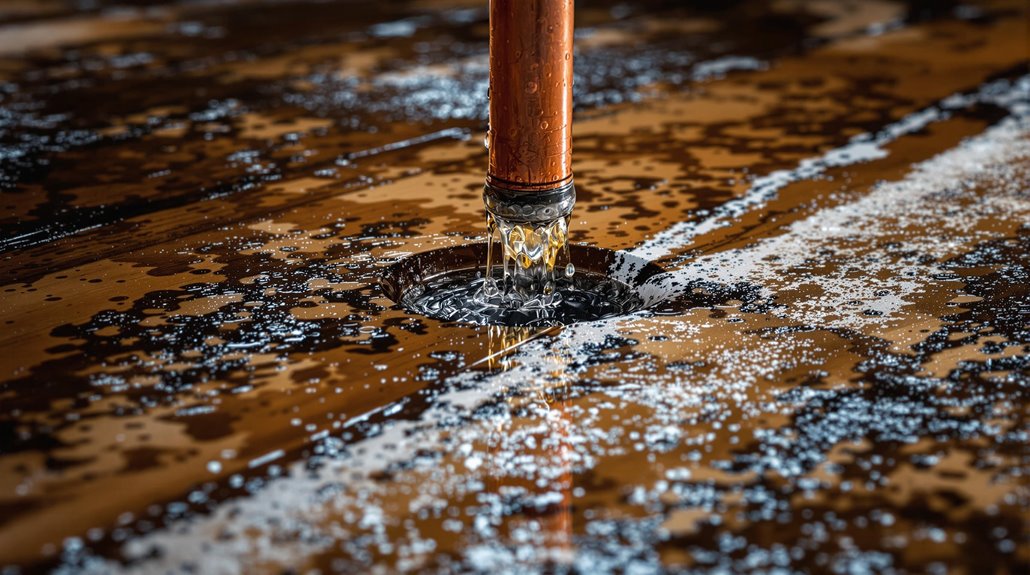
When are strange noises coming from the plumbing system a cause for concern? Unusual sounds like dripping or trickling within walls may indicate hidden leaks due to pipe damage. Gurgling or hissing sounds can suggest restricted water flow or escaping water from a broken pipe, requiring prompt investigation. Clanging or banging noises from pipes can occur when water pressure fluctuates, potentially signaling a burst pipe or loose connections.
Increased loudness of sounds from pipes may indicate damage, especially in smaller diameter pipes susceptible to leaks. Homeowners should listen for consistent or unusual noises when all fixtures are off to identify hidden leaks or pipe issues early on. Recognizing these sounds as signs of pipe damage can help address plumbing issues before they escalate. By paying attention to unusual sounds, homeowners can mitigate the risk of further damage and costly repairs associated with fluctuating water pressure and pipe damage.
Visible Signs of Water Damage
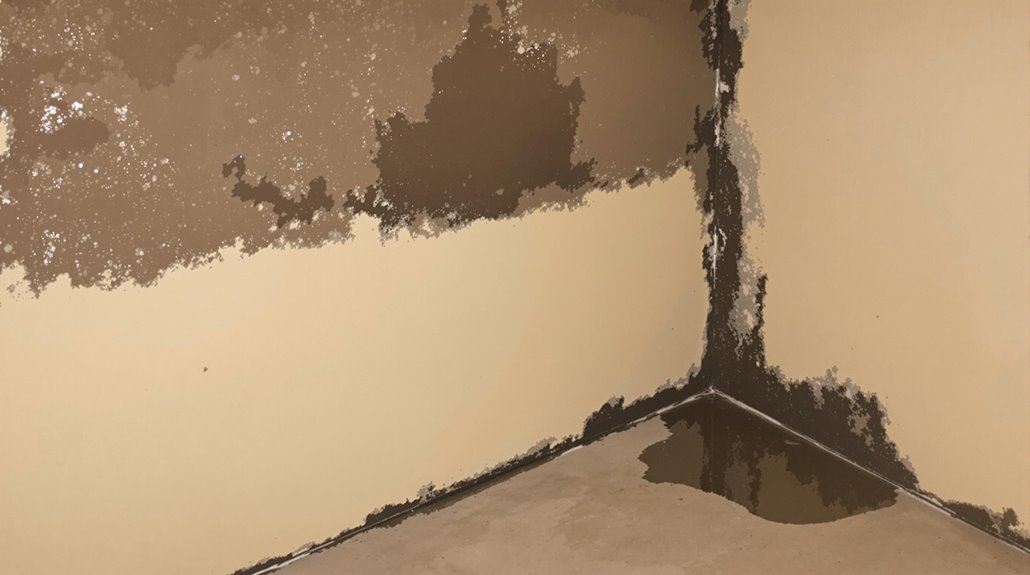
While some signs of a burst pipe under the house may not be immediately apparent, visible indicators of water damage can often be a clear sign that a problem exists. Stains and discoloration on walls and ceilings can range in color from beige to brown and are often a clear indicator of water damage. Puddles or wet spots on the floor, particularly in unexpected areas, can signal water pooling from a leak beneath the house.
| Visible Signs | Description | Potential Cause |
|---|---|---|
| Stains and Discoloration | Beige to brown marks on walls and ceilings | Water damage from burst pipe |
| Puddles or Wet Spots | Water pooling on floors, especially in unexpected areas | Hidden leaks under the house |
| Peeling Wallpaper or Bubbling Paint | Moisture buildup in walls | Prolonged exposure to water |
| Soft or Squishy Spots | Compromised structural integrity of subflooring | Water damage from prolonged exposure |
These visible signs of water damage can also lead to mold growth, posing health risks if left unaddressed.
Indications of a Burst Pipe Outside the Home
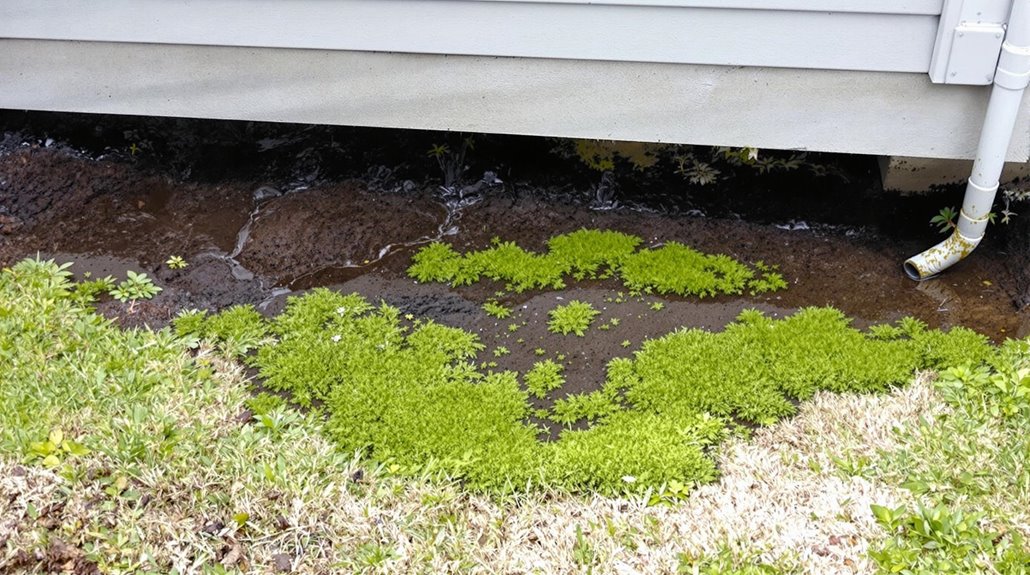
In addition to the visible signs of water damage within the home, external indicators can also signal a burst pipe. Puddles near the home's foundation or unusually soggy areas in the yard may indicate a broken main water supply line, suggesting a significant leak underground. This can lead to serious water damage and structural issues if left unaddressed. Cracking or sinking in driveways and walkways can occur due to softening ground from water leaks, compromising structural integrity. Water pooling at the bottom of slopes in the yard is another warning sign of a potential underground leak. Homeowners should also be aware of unusually green patches of grass, which may signal a sewer leak. These external warning signs should not be ignored, as they can indicate a leaking pipe in the water supply system, potentially causing a brownish tint in the water and further damage to the home.
Preventing and Responding to Burst Pipes

Preventing burst pipes under the house involves proactive measures that homeowners can take to minimize the risk of pipe failure. Regular maintenance and inspections can help identify potential weaknesses before they lead to a burst. Homeowners can take the following preventive measures:
- Insulating pipes in unheated areas to prevent freezing and subsequent bursts during extreme cold weather
- Regularly inspecting plumbing systems for signs of wear, such as corrosion or loose connections
- Maintaining a consistent indoor temperature to minimize the risk of temperature fluctuations that may stress pipes and lead to breaks
- Draining outdoor hoses and shutting off exterior faucets before winter to prevent water from freezing and expanding within the pipes


